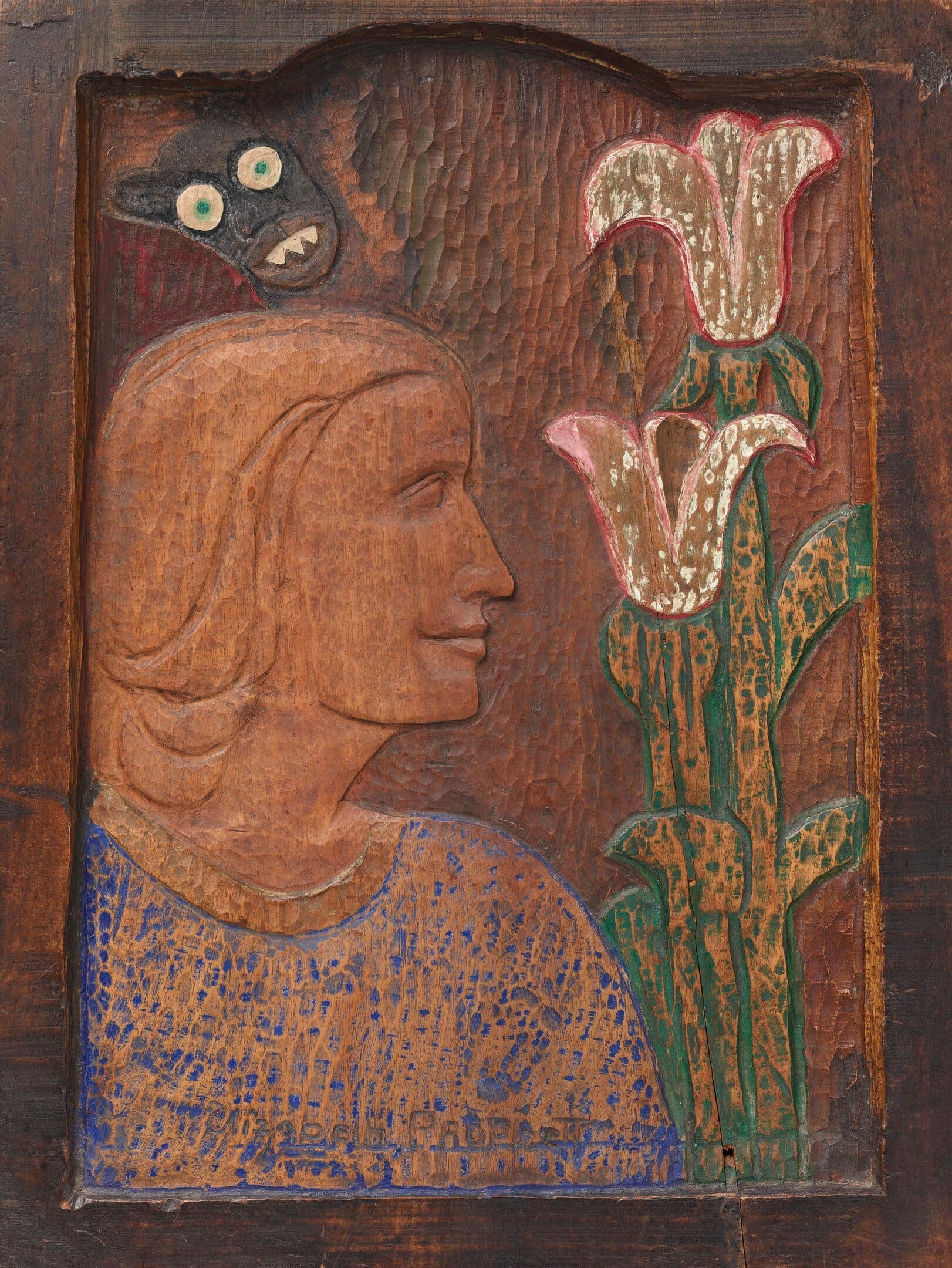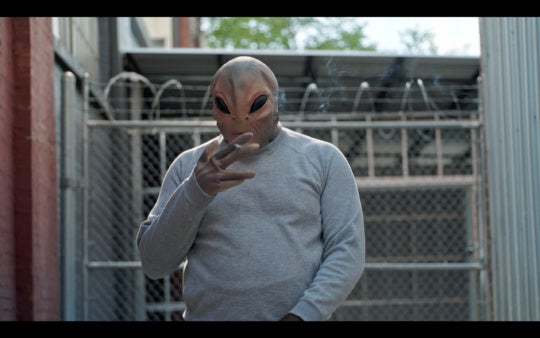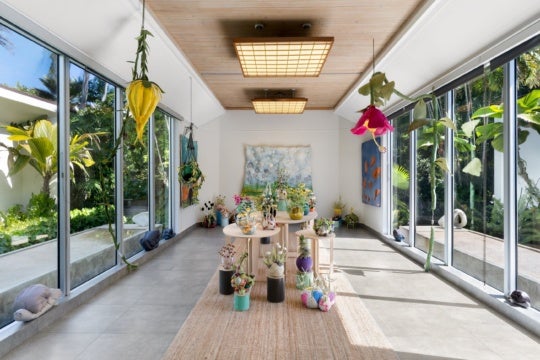
The works in Martha Clippinger’s show “Hodge Podge Lodge,” on view through November 12 at the Columbus Museum, exude a sense of playfulness through their ad hoc materiality and diminutive scale. In her textiles, painted sculptures and assemblages, she favors arrangements of simple shapes and bright colors in wonky geometric compositions. Her art-making is pared down to the sort of quotidian choices that compose market displays or domestic interiors.
The works are made from either polychromed wood or textiles and are mounted on the wall like paintings or placed on the floor. Clippinger also hints at the language of installation with a few unconventional placements. Abasolo, an assemblage about ten inches square, rests low on the baseboard molding of the gallery, its vertical striations resembling a child’s building set. Thirty, a yard-long plank with green, red, and cream-colored shapes, runs vertically up the edge of a wall.

Check (for E. Albee) summarizes the strengths of Clippinger’s sensibility. The object hovers between categories — it seems to have legs thrusting outwards like some kind of arthropod, yet it also resembles toy furniture. Rough 2 x 2 boards project outward into space from a rectangular panel covered with multicolored striped fabric resembling a homely craft project. Their ends are painted lime green, pink, and orange, creating the effect of a set of eight squares floating forward from the panel.
In a 2012 interview, Clippinger mentions the Gee’s Bend quilters of Alabama as well as street vendors in Mexico City as influences. Both sources, considered folk art, involve celebrations of pure color and form. More recently she has cited Alma Thomas and Eddie Martin, both of whom were Georgia artists who lived near Clippinger’s childhood home in Columbus.

It is common for artists to “respond” to a source, or to “reference” a thing beyond their practice. These responses and references are often a way to contextualize work, but what happens when an academically trained artist such as Clippinger refers to folk art? Clippinger uses folk art as a way to discuss color without referring to modern movements that are based on the experience of pure color. This allows her to operate as a colorist who makes decisions that are simple or casual. With a few works, however, Clippinger’s responses are so basic that they become routine. Chevron, composed of painted wood slats arranged in two rows on the floor, is handled as thoughtfully as the laying out of color swatches when one is choosing a new carpet.
Clippinger’s use of scale in these works sends mixed messages. With Absolo, the diminutive scale works with the placement in a humorous way, hinting at toys or play objects. All of the wood objects, however, are executed at a small, convenient-to-handle size; most would fit inside a microwave oven. Color is obviously important to the artist, but she never works large enough to fill our field of vision with it. The small scale is so consistent that it seems like a de facto rather than a deliberate choice.

Intuitive color choice is the greatest strength of “Hodge Podge Lodge.” MJ is an understated piece with rich nuance. A panel about 7 inches square, it has diagonal gouges whose wavering edges indicate that they are hand-carved. The triangles and diamonds that the lines form are filled in with blue, terra-cotta red, gray, and raw sienna. The edges where these colors meet ride through the tiny gouges, moving our eyes over their strange topography. The work changes into a meditation object or a Zen riddle under prolonged viewing.
Three hand-dyed woven wool pieces serve to contextualize Clippinger’s notion of color. Handcraft and textile craft are very old ways to explore color as pure abstraction. In these works — woven by Augustin Contreras Lopez and Licha Gonzalez Ruiz — color can be experienced as a pure field even as we maintain a sense of their tactility. When contemplating a weaving, it is hard not to imagine the feel of the material in one’s fingers.
“Hodge Podge Lodge” carves out a de-intellectualized space for us to enjoy the phenomena of pure color. In her best moments, Clippinger creates an experience where color is pleasurable, reminding us that the enjoyment of color is the enjoyment of daily life.
Orion Wertz is a painter and graphic novelist living in Columbus, Georgia, where he teaches drawing and painting at Columbus State University.




